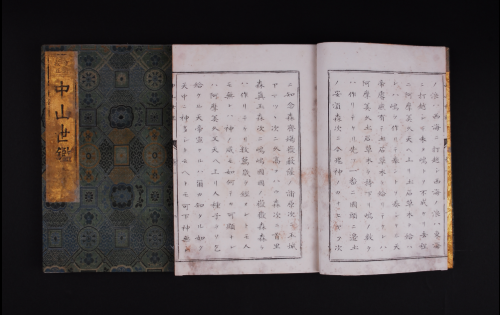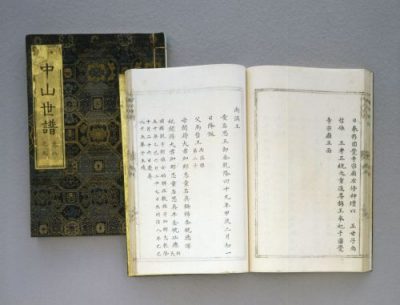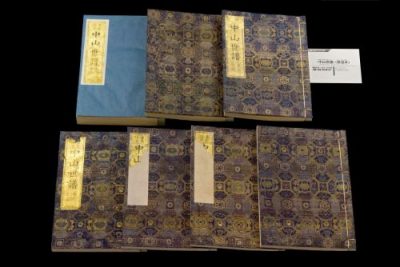Official history of Ryukyu Kingdom to be designated Important National Cultural Property

Chuzan Seikan (photograph provided by the Okinawa Prefectural Museum & Art Museum)
March 19, 2020 Ryukyu Shimpo
On March 19, Japan’s Council for Cultural Affairs made a recommendation to Koichi Hagiuda, the minister of Education, Culture, Sports, Science and Technology, to designate the official history books of the Ryukyu Kingdom—the Chuzan Seikan (six volumes), Chuzan Seifu: Sai Taku Edition (7 volumes), and Chuzan Seifu: Sai On Edition (12 volumes), as an Important Cultural Property of Japan (“calligraphy and books” category).
The ministry is expected to announce the designation as recommended, by this summer.
It will be the third Okinawan artifact to earn the designation in the “calligraphy and books” category, following the designation of the Omorososhi (a collection of ancient Ryukyuan songs) and the Konnkou Kennsyuu (ancient dictionary of the indigenous Ryukyu language).
The three books, considered a single unit, are highly valued in Ryukyuan history research as the most important texts.

Chuzan Seifu: Sai Taku Edition (photograph provided by the Okinawa Prefectural Museum & Art Museum)
The Chuzan Seikan is a Ryukyuan history book compiled in 1650 by the Ryukyuan politician and regent, Sho Shoken (also known as Choshu Haneji) by order of the king, Sho Shitsu. It is written in Japanese.
Chuzan Seifu is a Ryukyuan history book with two versions, written in Chinese.
The seven volumes in the Sai Taku edition is an expanded version of the Chuzan Seikan, edited and translated into Chinese in 1697-1701 by Sai Taku, who served in the most powerful official post of Kume Village.
The Sai On edition was compiled in 1724-1725 by Sai On, son of Sai Taku, with further modifications.
All three designated articles were taken to the United States during the turmoil of the Bat

Chuzan Seifu: Sai On Edition (photograph provided by the Okinawa Prefectural Museum & Art Museum)
tle of Okinawa and were returned to the Ryukyu government after the war.
Shojin Heshiki, head of the Prefectural Board of Education, commented on the Important National Cultural Property designation: “I am thrilled.
The Prefectural Board of Education will continue to work with the Okinawa Prefectural Museum & Art Museum to promote the preservation and education of cultural properties.”
(English translation by T&CT and Monica Shingaki)
Previous Article:Former members of referendum association meet, plan to ask prefectural government to re-revoke land reclamation permit
Next Article:Naha Airport’s Runway No. 2 open for use, first flight to land greeted by firehose arch
[Similar Articles]
- Original copy of a 1929 Ryukyu Shimpo article describing appropriation of Ryukyuan remains soon to be available at Junkudo book fair
- Sake cup gifted to Konoe Iehiro 300 years ago by Tei Junsoku found preserved in Kyoto
- Elephant Ryuka does first calligraphy of the year
- Elephant Ryuka tries first calligraphy of the year
- Chinese classic documents from the Ryukyu Kingdom era published
 Webcam(Kokusai Street)
Webcam(Kokusai Street)


